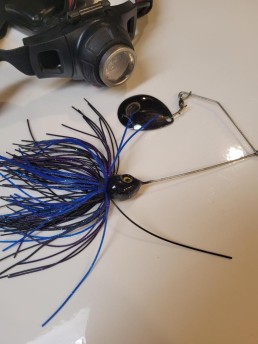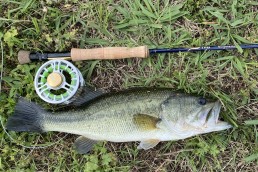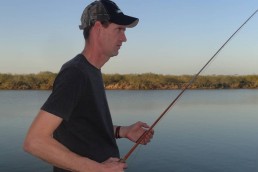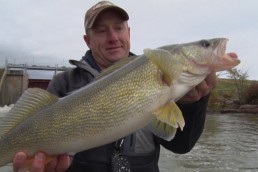Fly Rod Bassin’ in Wisconsin
SHARE THIS POST
I can say that I fly fish, but I can’t really call myself a “fly fisherman.” A true fly fisherman is the guy who only fishes with fly gear. Well, I’m not that dedicated. I’ve always said that when you have caught all the fish you need to catch and don’t really care if you catch any more, take up fly fishing.
But when it fits, it fits. I bust out the fly rod when it makes sense and it is the right tool for the job. One of my favorite times of the season is in mid-May through June when shoreline weeds and pads are grown in but not choked. The bass are still shallow and haven’t yet moved to their deep, mid-summer haunts. Post-spawn smallmouths will be hanging around shallow, hard-bottom areas. It’s fly rod bassin’ time!
So, why the fly rod, you may be asking? Why not just throw a Pop-R or a Hula Popper? First, this is just plain fun. Catching an 18-inch largemouth or smallmouth on a fly rod and surface fly is a pure adrenaline rush. There is nothing like the fight on a fly rod.
Second, it doesn’t get stealthier than a fly rod presentation to a shallow-water bass. Some largemouth bass could be sitting in two feet of water or less, next to newly emerging pads. Big, post-spawn smallies could be sitting in 18 inches of water, on a hard-bottom flat in gin-clear water. In fact, you could be sight fishing smallies in an area like that, where a heavy lure falling amongst them will spook them. A fly rod is the only way to go.
The third reason is something it took me years to realize: It’s super-efficient. Picture me casting to the edge of a pad field. I’m looking at a new pocket or point or loose group of pads every 4 to 6 feet. If I am casting my usual Heddon Pop-R (which I do love), I make the cast, let it sit a second, pop it twice… and if nothing is there, I am winding it in all that way just to cast it again, 5 feet to the right. This is where a fly rod saves a ton of time. With a fly rod, if nothing hits in a couple pops, I pick up the line and, in one back cast, I drop it back down 5 feet to the right. There’s no winding back in and recasting. It’s very efficient.
Let’s talk gear. I’m hoping you may already have a fly rod, but if not, I’ll point you the right direction.
If you are a stream trout fly fisherman, you probably have a 5-weight rig (or less). I’d love to tell you that’s going to be OK, but it’s not. You can try it, but you are going to be frustrated trying to cast a bulky bass popper on a 5-weight. A 5-weight was made to cast small trout dry flies or nymphs.
I suggest at least a 7-weight for bass, and probably lean more toward an 8-weight. If you are a saltwater fly fisherman or steelhead fly angler and own a 9-weight outfit, it will work. It’s a bit heavy, but it will work.
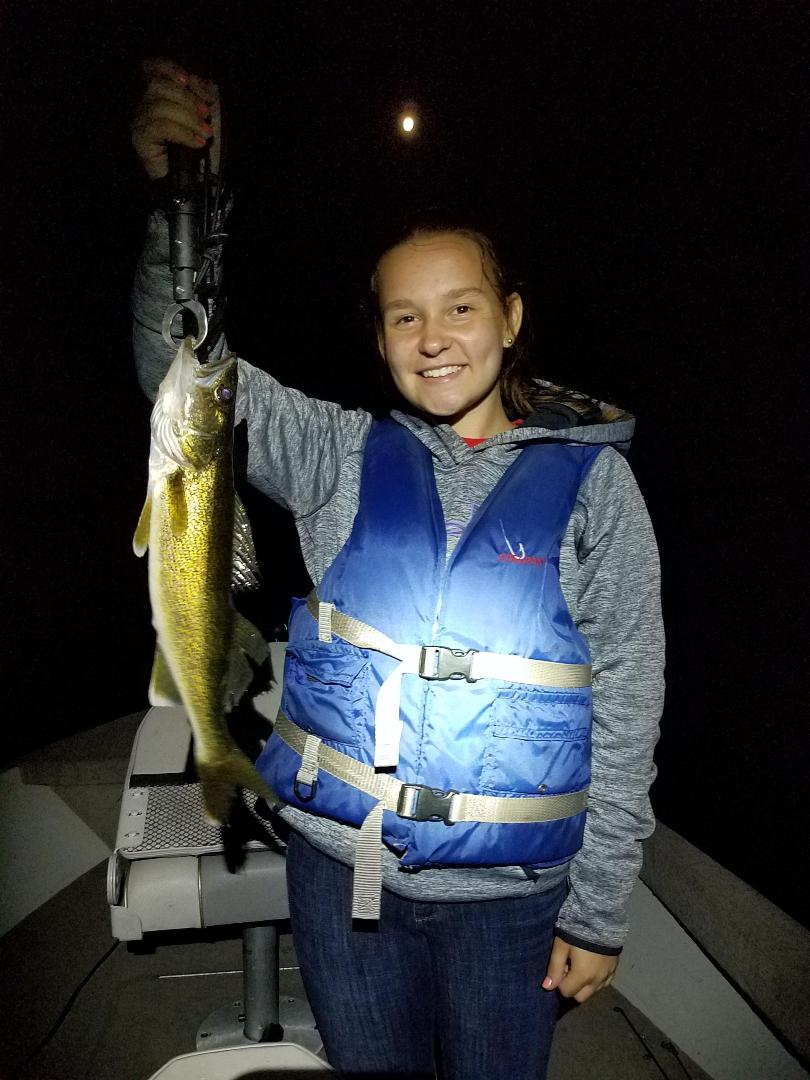
If you are getting started in fly fishing for bass, steer away from $1,000 fly rods. Bass fishing usually doesn’t require long casts, and a rod in the $120 to $150 range is perfect.
Are you enjoying this post?
You can be among the first to get the latest info on where to go, what to use and how to use it!
For bass, reels just hold the line; therefore, the same advice as for the rod: You can get away with an economical model under $100.
The line is what carries the fly in fly fishing. The line weight needs to match the rod weight, i.e. 8-weight rod, 8-weight line. You will be primarily fishing shallow with surface flies or shallow subsurface flies, so a floating line is what you are after. Within that group of floating lines, the styles can vary. You are looking for is what is commonly labeled a “Bass Bug Taper.” These lines are specifically designed to turn over bulky, wind-resistant flies used for bass. They are very front-loaded and take very little false casting to get a big “bug” up off the water and then back on the spot.
You need a leader to attach the fly to your fly line. For about $4, you can get a pre-made tapered leader. I have been making my own for a while. Dtart with 3 feet of 30-pound mono. Then, add about 2 feet of 20-pound mono using a Uni-Knot. Then finally, about 2 feet of 12-pound mono. This gives you about 7 feet of leader—all you need for bass fishing. Anything longer and a popper or mouse will just die in the air and the line won’t turn over.
Let’s talk surface poppers for bass. Dwight Burns of Whitefish Bay, Wis. and his son Ryan from Colorado convene in the Hayward area in June for some of the most fantastic, shallow water, fly rod smallie fishing you will ever experience. They cruise the hard-bottom shallows looking for northern Wisconsin trophies. Nothing fancy here. The old-school Boggle bug is their popper of choice. The Boggle Bug is a typical fly rod popper: You would recognize the cork body, rubber legs and a trailing splash of spun hackle and feathers. They are no-nonsense, float high and are nearly indestructible.
A walk through a good fly shop will reveal dozens of great surface flies for bass. Some will throw a big plop when witched, and some are designed to be stealthier, like sliders and divers. Let the bass tell you what they want and have a selection along. The Boggle Bug also comes in the Boggle Slider version which is basically the cupped face turned backwards. At times, bass want the plop, and other times, they just want a subtle twitch.
My bass fly fishing is done in the southern part of the state and I am a full-blown mouse junkie. To me, there is nothing better than swimming a deer hair mouse and seeing it get sipped below the surface by a 20-inch largemouth. Bass cannot resist a mouse. They know that, like other terrestrials, it has limited escape skills when it enters the bass’s world, and it’s a big, fat, helpless, easy meal. Mice are special opportunities for bass.
Whether you are a seasoned fly fisherman or want to dip your toe in the fly world, bass offer a great opportunity to Wisconsin anglers. The next two months are the perfect opportunity to tangle with these shallow-water monsters, whether you fish waters in the northern or southern parts of the state.
Marc Wisniewski is an avid Wisconsin angler specializing in Lake Michigan shore and inshore fishing. He also chases bass, pike, and muskies anywhere he can. He has built custom rods for 35 years and makes lures from wood, lead and soft plastics. Wisniewski has been writing fishing articles for more than 30 years.
MWO
SHARE THIS POST
Did you enjoy this post?
You can be among the first to get the latest info on where to go, what to use and how to use it!
Marc Wisniewski
Marc Wisniewski is an avid Wisconsin angler specializing in Lake Michigan shore and inshore fishing. He also chases bass, pike, and muskies anywhere he can. He has built custom rods for 35 years and makes lures from wood, lead and soft plastics. Wisniewski has been writing fishing articles for more than 30 years.
